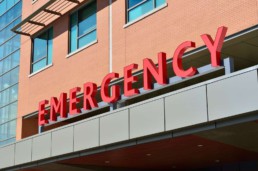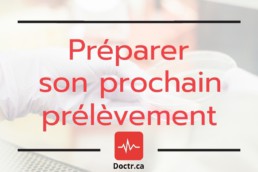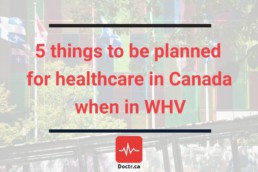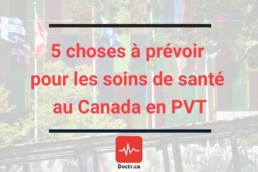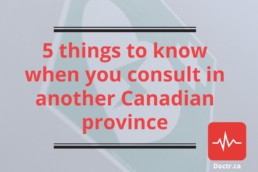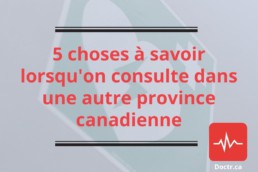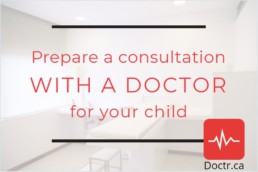4 ways to avoid long ER wait times
Tips on how to deal with long ER wait times
ER wait times are long and it annoys everyone. While waiting at the ER for what seems like eternity, You might have asked yourself “Why are ER wait times so long ?” and ‘’When are the emergency rooms the least busy ?’’ In fact, the average wait time for ER’s in Canada is over four hours. This situation becomes a major problem for Canadians after access to family doctors. But what is the explanation behind these hours of patience ?
A shortage of emergency department physicians is one of the main cause of these long hours waiting. The few family physicians available is another factor. Canadians who don’t have a family doctor tend to visit the ER for multiple non-urgent conditions. The lack of funding by the federal government is also an important economic factor. With this being said, here are some tips to avoid long ER wait times.

1. Avoid Going To The ER Between 6 Pm And Midnight.
This is the easiest way to get short ER wait times. Let’s state the obvious, most Canadians are not working in this timeslot and the ERs are full by that time. The best time to visit the ER is between 6 am and noon. There are two reasons for this advice. First, the hospitals are at full efficiency in the morning with the most staff. Second is that by mid-morning, doctor’s offices and medical clinics are generally open, relieving pressure from the ERs.

2. Call Your Primary Care Physician
Not everyone has a primary care physician, but if you do have one, call your physician. Ask if you can see him or her instead of staying and waiting for hours at the ER. If you know your condition is non-urgent save time and ask an appointment with your family doctor. There are alternative ways of speaking to a medical authority such as calling 811 HealthLine. They can help by redirecting you to the most appropriate service, which might not be the ER.

3. Use an ER Wait Time Tracking App
If you are tired of always typing stuff like ‘’walk-in clinic near me’’ in Google, there are alternatives.The most known app to get through the healthcare system is Doctr. Access the wait times and occupancy rates of emergency rooms in real-time across Canada. There is also lots of information on walk-in clinics availability. If you hate calling multiple times to get an appointment this is for you. Join the Doctr community and share the status of medical walk-in clinics with other patients to book appointments faster.

4. Register yourself and wait at home, come when it’s your turn.
There are services that let patients be more autonomous by registering himself inside the walk-in clinic and wait somewhere else. Some even send you a notification or an email when it’s your turn to see the doc. We’ll save you some time and present two of them.
Patient in Line is a system where you go into the clinic, pick up your number in line and call Patient in Line. It will notice you when your turn is near. Like receiving a text or a call instead of sitting in the clinic for hours ?
Chronometriq is a company that helps you book an appointment with a clinic, reminds your appointments and lets you self check-in once you arrive at the clinic. It reduces the administrative work form the employees and helps increase their efficiency. Want to take control of your appointment?
4 conseils santé pour le printemps
Le printemps est finalement à nos portes. Nous savons que vous êtes impatient de profiter du beau temps après le long hiver que nous venons de vivre.
Par contre, après l’hiver et la saison de la grippe, ne relâchez pas votre attention sur votre santé ce printemps. Voilà quatre points sur comment profiter des temps plus chaud le plus en santé possible.
Faites attention aux piqûres d’insectes
Les insectes ne sont pas une source d’inquiétude l’hiver, mais dès que le temps devient plus doux, ils réapparaissent. Mis à part les guêpes et les abeilles, dont les piqûres peuvent causer une réaction allergique à certains, les moustiques causent aussi des piqûres inconfortables. Les piqûres de ces derniers, lorsqu’elles sont trop grattées, peuvent se transformer en plaie et s’infecter, ce qui entraîne une consultation médicale. Pour éviter ce problème, assurez-vous de vous couvrir avec des vêtements longs et légers le plus possible. Prenez aussi la peine de vous protéger avec des solutions chasse-moustiques. Ces précautions sont à privilégier lorsque vous êtes à l’extérieur, surtout avant l’aube et après le crépuscule.
Prenez soins de vos muscles
Il est certainement agréable d’être plus souvent à l’extérieur après la période froide de l’hiver. C’est également sain d’être en plein air et d’être actif. Par contre, votre corps n’est pas habitué au train de vie plus actif que vous désirez entreprendre avec le retour des températures chaudes. Vous aurez besoin d’ajustements après un hiver sédentaire passé à l’intérieur. Assurez-vous de faire des étirements, même brefs, avant et après des activités en plein air, pour prévenir les crampes et les raideurs articulaires.
Appliquez de l’écran solaire
Le printemps est une période d’ensoleillement allongée en comparaison avec l’hiver, en plus d’être une saison plus chaude. Plusieurs d’entre nous vont alors passer plus de temps à l’extérieur. Nous allons donc tous être plus exposer au soleil, cela pouvant mener à des risques pour votre peau. Il faut donc se réhabituer à mettre de l’écran solaire et à protéger notre peau. Prenez l’habitude de régulièrement hydrater votre peau, en plus d’appliquer de l’écran solaire avec un FPS de 15 ou plus. Des lunettes de soleil et un chapeau sont aussi d’une grande aide!
Prenez garde au rhume des foins
Finalement, le printemps signifie qu’il y aura beaucoup de pollen dans l’air. Avec le pollen, vient le rhume des foins pour plusieurs. Aussi connue comme la rhinite saisonnière, le rhume des foins est une réaction allergique causée par l’exposition à un agent allergène, tel que le pollen. Une personne sur huit souffre du rhume des foins au Québec. Les symptômes peuvent inclure l’asthme, des yeux irrités, des éternuements, des migraines et plus.
Il existe des médicaments sans ordonnances qui peuvent calmer les réactions allergiques liées au rhume des foins. Cependant, consultez un professionnel de la santé, comme un pharmacien, avant d’utiliser ces médicaments.
Lisez plus sur le rhume des foins sur le Portail santé mieux-être du gouvernement du Québec.
4 Health Tips for Spring
Spring is now around the corner. We know you’re eager to get outside and enjoy the warmth after the long winter we’ve just had.
However, with spring comes a different set of health warnings than winter. So here are 4 tips on how to enjoy the warm sunny days as healthy as possible.
Don’t get bitten by insects
Bugs aren’t something that you worry about during the winter. But as soon as the weather starts to warm up, they come out to play. Other than wasps and bees that can sting and cause a reaction in people who are allergic, mosquitoes will start being active. Mosquito bites, if scratched, can get infected and need medical attention. So wear long sleeves as much as you can, and make sure to use bug sprays to protect yourself when you’re outside, especially if before dawn and after dusk.
Be care of your muscles
It’s certainly nice to get out more after the winter chill has passed, and it’s certainly healthy to be outside and be active. But your body is not used to the more active lifestyle you’re wishing to get yourself into. It will take some adjustments after a winter of mostly staying indoors. Make sure to stretch your body even if just for briefly, before and after an outdoor activity, so that you don’t get any cramps or stiff joints.
Wear sun protection
Spring has more hours of daylight than winter, and it also gets warmer. So many of us will start to spend more time outdoors. This will lead to an increased sun exposure than you’re used to, and that can lead to skin damage. Also, after a long winter you might not be used to putting on sunscreen and protecting your screen. So make sure to get back into it. Regularly moisturize your skin, and wear sunscreen with SPF 15 or higher. A pair of sunglasses and a hat also helps!
Watch out for hay fever
Finally, spring means that there is going to be a lot of pollen from tress in the air. And with pollen, comes hay fever. Also known as seasonal rhinitis, hay fever is an allergic reaction caused by exposure to pollen. 1 in 8 people suffer from hay fever in Quebec, and symptoms may include asthma, irritation of the eyes, sneezing, headaches, and more.
There are some over-the-counter medications available relieve the allergic reactions of hay fever. However, do consult a health professional prior to using medication, such as a pharmacist.
Read more about hay fever at the Health Wellness portal from the Government of Quebec.
Prepare your next sample
You had a consultation with a doctor who prescribed a sample to you. Sample are a common extraction of fluids for a laboratory analysis. This article shows you where you can go take it, and the procedure to follow.
Sample collection form request
When your health professional will explain that you will need a sample test, he will certainly give you a sample collection form request. It is a paper detailing the necessary tests to be completed, whether it is blood, urine or stool test.
Before taking the sample
You may have to follow some preparatory procedures for your sample the day before or a few hours before the test. Several blood samplings must be made fasten, so make sure you read carefully your form request. It is also possible to discuss the matter with your Doctor or to contact 811 in case of doubt. You can still drink water before, it is even recommended. However, do not take your medication the morning of the test, unless your health professional says otherwise.
Choice of places with a sample service
You have access to a plurality of places that offers that service. First you have CLSC’s that propose this service free of charge when you present your Health Insurance Card. Blood tests can also be taken in some pharmacies with charges. You can also go with private companies that offers laboratory analysis services and with the companies that do sampling at home. Private or with charges services are often the ones with the less waiting time.
What you must bring the day of the sample collection?
When you will go for your tests, be sure to have with you your sample collection form request and your Health Insurance Card to be sure to have the service free of charge where it is possible.
They will provide the sampling container needed at your arrival. In some cases, you can ask for a sampling container and make it home before bringing it back. This applies to urine samplings. However, you must keep the sample fresh and provide it the morning you give it for analysis.
Samples are not a procedure for witch you should worried. If you have issues facing the pain or a fear of needles, speak to your doctor or to a pharmacist. There is a cream that desensitizes the area before the sampling. It is available at the desk of pharmacies after a discussion with the health professional.
Préparer son prochain prélèvement
Vous avez eu une consultation avec un médecin qui vous prescrit un prélèvement à faire. Le prélèvement est une prise de fluide corporel assez commun pour des analyses en laboratoires. Cet article vous détaille les lieux possibles où aller le faire, ainsi que la procédure à suivre.
Requête d’analyse
Lorsque votre professionnel de la santé va vous parler du test, il va certainement vous remettre une requête d’analyse de biologie médicale. C’est une feuille papier détaillant les prélèvements à faire et comprenant ses directives et sa signature. Vous pouvez en avoir plusieurs à faire, que ce soit de sang, d’urine ou de selles.
Avant de passer son test de prélèvement
Vous pouvez devoir suivre des procédures préparatoires à votre prélèvement le jour d’avant ou quelques heures avant celui-ci. Plusieurs tests de sang se font à jeun, donc assurer vous de bien lire votre requête d’analyse. Vous pouvez aussi en discuter avec votre médecin ou contacter le 811 en cas de doute. Vous pouvez toujours boire de l’eau. Veillez à ne pas prendre vos médicaments le matin de la prise, sauf en cas d’indication contraire de la part de votre professionnel de la santé.
Choix d’endroits avec un service de prélèvement
Vous avez accès à une multitude de points qui offre le service de prélèvement. Vous avez d’abord les CLSC qui propose gratuitement ce service sur présentation de la carte d’assurance maladie. Les tests sanguins sont aussi faits dans plusieurs pharmacies moyennant un frais. Vous avez aussi accès à des entreprises privées qui offre des services de laboratoire d’analyses et celles qui font les prélèvements à domicile. Les services privées et/ou coûteux sont souvent ceux avec le temps d’attente le plus bas.
Quoi apporter le jour du prélèvement ?
Le jour de votre rendez-vous, assurer vous d’avoir avec vous votre requête de prélèvement de biologie médicale et, surtout, votre carte d’assurance maladie pour accéder à la gratuité du service lorsque possible.
On vous fournira les contenants nécessaires à votre arrivée. Dans certains cas, vous pouvez demander un contenant et faire votre prélèvement à domicile et le rapporter ensuite. Cette directive s’applique pour les prélèvements d’urine. Toutefois, vous devez garder l’échantillon au frais et le produire le matin même ou vous le porterez pour analyse.
Les prélèvements sont une procédure courante pour laquelle il ne faut pas s’inquiéter. Si vous avez des craintes face à la douleur ou aux aiguilles, parlez-en à votre médecin ou à votre pharmacien. Il existe une crème qui désensibilise la zone avant le prélèvement, disponible en pharmacie au comptoir après une discussion avec un professionnel.
5 things to be planned for healthcare in Canada when in WHV
The steps to come to Canada for the time of a working holiday visa are pretty long. Even when you are in the host country, there is a whole world to understand. The culture, transports, the health system… This article will provide you from falling into the Quebecer health system traps who can really put you in trouble!
1. Public or private insurance?
Only a few European countries have an equivalence deal on the social security. However, in a WHV, you must contract a private insurance. Before making your choice, shop for the right company and the coverage to maximize the services offered regarding the cost. You must have a proof of insurance in your entrance to the country.
2. Read attentively your insurance contract
Insurance contracts differs from one company to the other and can contain bad surprises. Take the time to read it so you can distinguish what is covered from what is not. It is also important to understand the modalities of your insurance coverage. It is best to know forward if you have a franchise to pay or if you will have to pay the fees first and then ask the insurance company for a refund. You could also be subject to a limit of the covered amount.
3. keep your receipts when visiting the E.R.
Some insurance companies can require that the client pays the fees and then do a claim to get a refund. In that case, you will need the originals or copies of your receipts for your health problems. It is also possible that the company demand to be advise forward to a visit at the E.R. so they can open a claim file. Whatever your case, if you have health related fees keep some written traces of them with the detail of the care receive and their cost.
4. Favor private clinics
For people that are not covered by the public regiment, it is strongly suggest going to clinics instead of the E.R. The costs that will be charged to you in a private clinic will be much inferior to the fees imputable at the E.R. In a hospital, you will have to pay not only for the care and the exams you receive, but also for the administrative fees of the establishment. Besides, the waiting time in private clinics is lesser!
5. Get informed before you need medical care
The best way to save time and money is to get information on procedures and the functioning of the health system. It is not when you will need medical attention that you will be at your best to analyze information. Better be prepared before!
5 choses à prévoir pour les soins de santé au Canada en PVT
Les démarches pour venir s’établir au Canada le temps d’un permis de vacances travail sont assez longues. Même lorsque vous êtes dans le pays d’accueil, il y a un monde à comprendre. La culture, les transports, le système de santé… Cet article vous évitera de tomber dans des pièges du système de santé québécois qui peuvent vraiment vous mettre dans le pétrin !
1. Assurance publique ou privée ?
Seulement quelques pays d’Europe ont une entente d’équivalence de la sécurité sociale. Cependant, en PVT, vous devez contracter une assurance privée. Avant d’arrêter votre choix, magasiner votre entreprise et la couverture pour maximiser les services offerts par rapport au coût. Vous devez avoir une preuve d’assurance à votre entrée au pays.
2. Bien lire son contrat d’assurance.
Les contrats d’assurance ne sont pas semblables d’une compagnie à une autre et peuvent contenir de mauvaises surprises. Prenez le temps de le lire afin de distinguer ce qui est couvert de ce qui ne l’est pas. Il est aussi important de comprendre les modalités de couverture de votre assurance. Il vaut mieux savoir tout de suite si vous avez une franchise à payer ou s’il faut débourser les frais d’abord pour se les faire rembourser par l’assureur ensuite. Vous pourriez aussi être sujet à un plafond du montant couvert.
3. Garder ses reçus lors de visites à l’urgence.
Certains assureurs peuvent exiger que le client paie les factures pour ensuite se faire rembourser après une réclamation. Dans ce cas, il vous faudra envoyer les originaux ou des copies des reçus pour vos soins. Il est aussi possible que votre assureur demande à être averti préalablement à la visite à l’urgence, afin d’ouvrir un dossier de réclamation. Peu importe votre cas, si des frais vous sont chargés garder les traces écrites détaillant les soins reçus et leur coût.
4. Privilégier les cliniques privées.
Pour les personnes qui ne sont pas couvert par le régime public, il est vivement conseiller de passer par les cliniques au lieu de l’urgence. Les coûts qui vous seront débités dans une clinique privée sont nettement inférieur que ceux de l’urgence. Dans un hôpital, vous allez débourser non seulement les frais pour les soins et les examens que vous recevrez, mais aussi les frais administratifs de l’hôpital. En plus, les temps d’attentes en cliniques privées sont moindres !
5. S’informer avant d’avoir besoin de soins de santé.
La meilleure façon d’économiser son temps et son argent, c’est de s’informer sur les procédures et le fonctionnement du système de santé. Ce n’est pas au moment où vous nécessiterez des soins de santé que vous allez être apte à décortiquer l’information. Vaut mieux être préparé avant !
5 things to know when you consult in another Canadian province
Your taking vacation out of the Quebec province and you have prepared weeks in advance. However, some contingencies are uncontrollable. If, during a trip you need health care, you’ll be more informed with this list.
1. Your health insurance card should be following you everywhere.
If you go in a clinic or to the office of a health professional, present right away your health insurance card. Some professionals accept the card, so you can receive the needed treatments without having anything to pay. They are directly remunerated by the Quebec Health Insurance Plan (RAMQ) with whom they sometimes take agreements. For hospitals, there’s an interprovince agreement which gives you the access to the same measures as in Quebec with the public plan card.
2. keep all your receipts.
In the case where your health insurance card is of no use when you need healthcare, you will need some documents. Be sure to have the originals of the receipts you will get. If you make payments with your credit card, keep a copy of the payment slip. When it is made by paycheck, save a picture of each sides of it with the professional’s or the establishment name. In brief, keep all the documents that details the interventions, the received services and their price. This will give you the opportunity to reclaim them to the RAMQ.
3. Get inform on your coverage.
The health insurance card does not cover every charge you could have in a health-related incident. It is giving you the same limited coverage as in Quebec. You are only covered with the doctors, dentists and optometrists. Any other healthcare is not insured and what is covered is in the precise beacons and in the same fees as in Quebec. If you spend more, the fees are at your charge.
4. Do not forget about your medication.
If you take prescribed medication, bring enough for the duration of your trip. You can consult your pharmacist before your leaving to obtain the needed quantity for period of your absence. Medicines, prescribed or not, bought out of the province of Quebec, is not covered by the Quebec Health Insurance Plan.
5. Prevent the worse.
Before leaving, get a private insurance. You will be more reassured that you will not have surprise fees that you will have to pay on the spot. Or else you could at least get them reimbursed quickly.
5 choses à savoir lorsqu’on consulte dans une autre province canadienne
Vous passez vos vacances hors de la province du Québec et vous avez tout préparé des semaines à l’avance. Par contre, un imprévu est si vite arrivé et vous ne pouvez pas tout contrôler. Si pendant votre séjour à l’extérieur vous avez besoin de soins de santé, vous serez plus informé avec cette liste.
1. Votre carte d’assurance maladie devrait vous suivre partout.
Si vous vous rendez dans une clinique ou au bureau d’un professionnel de la santé, présentez tout de suite votre carte d’assurance maladie. Certains professionnels acceptent la carte, ce qui vous permet de recevoir les soins nécessaires sans avoir à débourser un sou. Ils seront directement rémunérés par la régie de l’assurance maladie du Québec (RAMQ) avec qui ils prennent parfois des ententes. Pour les hôpitaux, il y a une entente interprovinciale qui vous permet d’être pris en charge dans les mêmes mesures avec la carte du régime public qu’au Québec.
2. Conservez toutes vos factures.
Dans le cas où la carte d’assurance maladie ne vous soit d’aucun recours au moment où vous avez besoin de recevoir des soins médicaux, vous aurez besoin de certains documents. Assurez-vous d’avoir les originaux des reçus que l’on vous remettra. Si vous faites des paiements par carte de crédit ayez une copie du relevé de paiement. Lorsque le paiement se fait par chèque, conservez une photo de chaque versant du chèque encaissé avec le nom du professionnel ou de l’établissement. Bref, ayez tous les documents qui détaille l’intervention, les services reçus et leur montant. Cela va vous permettre de les réclamer à la RAMQ.
3. Informez-vous sur votre couverture.
La carte d’assurance maladie ne couvre pas tous les frais que vous pourriez encourir lors d’un incident. Elle vous couvre dans les mêmes limites ou moins qu’au Québec. Vous êtes couvert seulement auprès des médecins, des dentistes et des optométristes. Tout autre soin n’est pas assuré et ce qui est couvert l’est selon des balises précises et dans les mêmes honoraires qu’au Québec. Si vous déboursez plus, les frais seront à votre charge.
4. Pensez aussi à votre médication.
Si vous prenez des médicaments prescrits, amenez-en assez pour la durée de votre séjour. Vous pouvez consulter votre pharmacien avant votre départ pour obtenir la quantité nécessaire pour la durée de votre absence. Les médicaments, prescrits ou non, achetés en dehors de la province du Québec ne sont pas couvert par l’assurance maladie publique.
5. Prévenez le pire.
Avant de partir, procurez-vous une assurance privée. Vous pourrez ainsi être assuré de ne pas avoir de frais surprise à payer sur place, ou au moins pour vous les faire rembourser rapidement.
Prepare a consultation with a doctor for your child.
From the first week of his birth, your child will have to become used to the presence of the white blouses around him. Doctors check the growth and the development of children and diagnose when necessary. You have a role in the efficiency of the doctor evaluation work, how can you prepare?
Before the consultation
You can choose for your child to be followed by a family doctor or a pediatrician. The first can see him without any restriction, while the second is limited to the age of maturity of 18 years old. It is a completely personal choice who will not harm your child. Anyway, if a more thorough consultation is needed, you will be referred to a specialist or redirected to the E.R.
After you have chosen your specialist and you have obtain an appointment, you can list the questions you have. Those can be regarding the health, the alimentation and the development of your child. You can prepare him by being franc with him on how a consultation goes. Use simple words that will be easy to understand. To reassure him, he can carry with him a blankie or a doll.
When he is older, ask him to speak himself with the doctor and remind him that your presence is not necessary. It will make him feel more at ease to speak with the professional. Above all, to be well prepared for an appointment with the doctor, there is a list of items that you should not forget to bring with you.
During the consultation
The professional has the task of measuring the development and the growth of children. Once in his presence, ask all the questions you have listed prior to the appointment to be sure you maximize the meeting. Make your child participate by asking him directly questions and by letting him answer himself to the doctor so they can create a trust bond. For the smaller ones, don’t be abrupt with them and be reassuring.
The pediatrician and the family doctor do not only take care of the physical health of children. They also evaluate their affective and cognitive development and their alimentation. This makes the consultation the perfect time to discuss with professionals about everything that concerns your child.
Between appointments
After the first year of life of your child, he will see his health professional at least once a year. If you have questions between those consultation, you can always call info-santé/info-social to get the needed info.
